 Last additions Last additions |

Maicho-ren 舞蝶連Jul 18, 2006
|
|

The dance troupes come from in and out of town. A few from Tokushima as well as Kanagawa, Chiba, Shizuoka, and other prefectures. Edokko-ren 江戸っ子連Jul 18, 2006
|
|

きたまちじゃじゃ馬連Jul 18, 2006
|
|

Kikusui-ren 菊水会菊水連Jul 18, 2006
|
|

きたまちじゃじゃ馬連Jul 18, 2006
|
|

The dancers also let out a yell as they dance. Hana-no-ki-ren 花の木連Jul 18, 2006
|
|

Kikusui-ren 菊水会菊水連Jul 18, 2006
|
|

Kikusui-ren 菊水会菊水連Jul 18, 2006
|
|

Each dance troupe is called a "ren." This is the Suiko-ren. 吹鼓連Jul 18, 2006
|
|

Mitaka-ren みたか連Jul 18, 2006
|
|

Mitaka-ren みたか連Jul 18, 2006
|
|

Sometimes you see a gaijin participant. F.I.A.-ren えふあいえい連Jul 18, 2006
|
|

F.I.A.-ren えふあいえい連Jul 18, 2006
|
|

Midori-ren 美踊連Jul 18, 2006
|
|

Midori-ren 美踊連Jul 18, 2006
|
|

美遊ひよこ連Jul 18, 2006
|
|

Bikkuri-ren びっくり連Jul 18, 2006
|
|

It is most crowded along the large avenues. The crowd is several rows deep. Those in the front are expected to sit down.Jul 18, 2006
|
|

美遊ひよこ連Jul 18, 2006
|
|

Kimagu-ren きまぐ連Jul 18, 2006
|
|

美遊ひよこ連Jul 18, 2006
|
|

Kimagu-ren きまぐ連Jul 18, 2006
|
|

Edokko-ren 江戸っ子連Jul 18, 2006
|
|

Kokesaku-ren 苔作連Jul 18, 2006
|
|

Tokushima and Tokyo have the most number of Awa Odori troupes with 40 to 50 each.Edokko-ren 江戸っ子連Jul 18, 2006
|
|

These pictures show over 40 dance troupes which I photographed in 2004 and 2005. Budo-ren 富道連富道連Jul 18, 2006
|
|

Budo-ren 富道連富道連Jul 18, 2006
|
|

Other dancers might also wear a simpler outfit of short pants and happi coat. Swinging around a fan is also common.花の木連Jul 18, 2006
|
|

The dancers wear a light kimono and half-moon straw hats.Jul 18, 2006
|
|

Musicians always bring up the rear of the dance troupe. Taiko drums, flutes, and shamisen. The Awa Odori has a distinct rhythm and beat. It really makes you want to get up and dance.Jul 18, 2006
|
|

The dance troupe typically has subgroups of children, women, men, and musicians. Suiko-ren 吹鼓連吹鼓連Jul 18, 2006
|
|

The first Koenji Awa Odori in 1957 had only 57 dancers and about 2,000 spectators. Iroha-ren いろは連There are now about 30 to 40 Awa Odori parades held in Tokyo alone, usually in shopping areas. The one in Koenji is the largest in Tokyo.Jul 18, 2006
|
|

These days, they have 10,000 dancers from 70 dance groups and over 1 million spectators. Also see the video at YouTube.いろは連Jul 18, 2006
|
|

The dancers hop on one leg.So what is Tokushima's Awa Odori doing in Koenji, Tokyo? It was first organized by a youth group of Koenji's retail merchants in 1957. They wanted to hold an event to attract more shoppers to the area. Neighboring town Asagaya had already started the Tanabata Festival in 1954. The Tanabata Matsuri, of course, is from up north in Sendai, Miyagi Pref. So the Koenji folks decided to transplant a southern festival to Koenji. That was the Awa Odori.Jul 18, 2006
|
|
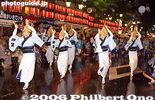
The parade route centers on JR Koenji Station. There are wide and narrow portions of the route.If it rains, they may stop the festival early.Jul 18, 2006
|
|

The men look more like the "fools."Jul 18, 2006
|
|

One trademark of the dancers is the crescent-shaped straw hats.Jul 18, 2006
|
|

The Koenji Awa Odori has become a major summer festival in Tokyo. It had a humble beginning in 1957 when it was originally called the Koenji Baka Odori. "Baka" means fool.Jul 18, 2006
|
|
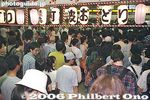
Crowd at JR Koenji Station on Awa Odori night.The Koenji Awa Odori is basically a parade of dancers. Many groups of dancers from various parts of Japan participate in the parade that follows the main shopping streets near Koenji Station on the Japan Railways Chuo Line in Tokyo.Jul 18, 2006
|
|
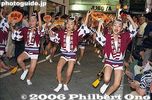
The troupe can consist of children (as young as age 2 or 3), women, and men.The Awa Odori originated 400 years ago in Tokushima Prefecture (in Shikoku) where it is one of Japan's most famous festivals. Although it is not as large as the one in Tokushima, the Koenji Awa Odori in Tokyo has become a major summer festival in Tokyo.Jul 18, 2006
|
|

Each dance troupe starts with a lantern bearer showing the name of the troupe.The dance is quite simple. While bobbing up and down, the dancer holds her hands above the head and shakes the fingers. This hand gesture indicates that the person has gone crazy. It is therefore nicknamed the "fool's dance." The dance is held on the last weekend in August.Jul 18, 2006
|
|

Disassembly. The wheel axel is made of steel.Jul 17, 2006
|
|

Gion Matsuri poster for 2004.Jul 17, 2006
|
|

Disassembly occurs soon after the procession ends.Jul 17, 2006
|
|

Minami-Kannon Yama float always appears last in the parade. (This float now appears in the Ato Matsuri parade on July 24.) 南観音山Jul 17, 2006
|
|

御池通りJul 17, 2006
|
|

DisassemblyJul 17, 2006
|
|

Jul 17, 2006
|
|

At the end of the route, the last floats arrive here by 1:20 pm or so. So if you want to see the float procession, be in Kyoto by 1 pm and go to the end of the route.Jul 17, 2006
|
|

Fune Hoko boat-shaped float makes the turn.船鉾Jul 17, 2006
|
|

This road has paid seating, but most are empty. Probably too hot to sit over the asphalt.Jul 17, 2006
|
|

The front wheels are placed on wet strips of bamboo.Jul 17, 2006
|
|

Oike-dori is a wide road and the last stretch of the procession. 御池通りJul 17, 2006
|
|

They are pulling floats weighing 10 tons.Jul 17, 2006
|
|

The yama floats have no problem turning.Jul 17, 2006
|
|

Fune Hoko boat-shaped float. 船鉾Jul 17, 2006
|
|

Successful corner turn to Oike-dori streetJul 17, 2006
|
|

When the wheels are on the bamboo strips, they pull.Jul 17, 2006
|
|

Another float is preparing to make the turn.Jul 17, 2006
|
|

A sea of people in front of Kyoto City Hall. 京都市役所前Jul 17, 2006
|
|
|
|

So why does it have a tree growing on the roof?Jul 17, 2006
|
|

Turning the hoko float at the Kyoto Gion Matsuri.Jul 17, 2006
|
|

Jul 17, 2006
|
|

An ambulance comes through, probably with someone suffering from heat stroke.Jul 17, 2006
|
|

Huge crowd watch the floats turn at the corner in front of Kyoto City Hall. 京都市役所前Jul 17, 2006
|
|

The Fune Hoko is a unique, boat-shaped float. 船鉾Jul 17, 2006
|
|

There are nine of these giant hoko floats.Jul 17, 2006
|
|

Jul 17, 2006
|
|

Jul 17, 2006
|
|

Fune Hoko boat-shaped float. 船鉾Jul 17, 2006
|
|

Jul 17, 2006
|
|

Jul 17, 2006
|
|

Shijo-dori street is the first segment of the procession route. 四条通りJul 17, 2006
|
|

Jul 17, 2006
|
|

Shijo-dori street 四条通りJul 17, 2006
|
|

The wheel's diameter is 1.9 meter.Jul 17, 2006
|
|

The hoko floats are about 20 meters tall.Jul 17, 2006
|
|

Jul 17, 2006
|
|

Pulling a float at the Kyoto Gion Matsuri.Jul 17, 2006
|
|

Jul 17, 2006
|
|

Jul 17, 2006
|
|

Tsuki Hoko 月鉾Jul 17, 2006
|
|

Tapestry on Urade Yama float depicting's Japan's Scenic Trio 占出山Jul 17, 2006
|
|

He steers the rear wheels with a wedged stick.Jul 17, 2006
|
|

Urade Yama float 占出山Jul 17, 2006
|
|

Jul 17, 2006
|
|

Tsuki Hoko (Moon Float) 月鉾Jul 17, 2006
|
|

Tsuki Hoko月鉾Jul 17, 2006
|
|

Pulling the Tsuki Hoko. Also see the video at YouTube.Notice the crescent moon design on their happi coats.Jul 17, 2006
|
|

Yama floatJul 17, 2006
|
|

Jul 17, 2006
|
|

Naginata Hoko 長刀鉾Jul 17, 2006
|
|

Kanko HokoJul 17, 2006
|
|

Naginata Hoko and chigo child 稚児Jul 17, 2006
|
|

Naginata Hoko and chigo child 稚児長刀鉾Jul 17, 2006
|
|
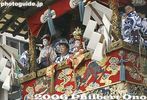
The Naginata Hoko is the only one with a live sacred child called "Chigo."長刀鉾Jul 17, 2006
|
|

Gion Matsuri is one of Japan's grandest festivals. Held annually in July, the festival's climax is on the 17th and 24th when giant, wooden-wheeled floats are pulled through the streets.This is at the starting point of the Yamahoko Junko procession on July 17.Jul 17, 2006
|
|

Starting at 9 am, the Naginata Hoko float always leads the procession. 長刀鉾Jul 17, 2006
|
|

I first went to one of the starting points of the parade.Jul 17, 2006
|
|

Jul 17, 2006
|
|
|

Chidori-ren at Yamato Awa OdoriJul 17, 2006
|
|

Jul 17, 2006
|
|

Jul 17, 2006
|
|

Jul 17, 2006
|
|

ちどり連Jul 17, 2006
|
|

Yamato Awa OdoriJul 17, 2006
|
|

Jul 17, 2006
|
|

Jul 17, 2006
|
|

Jul 17, 2006
|
|

Jul 17, 2006
|
|

Chidori-ren ちどり連Jul 17, 2006
|
|

Jul 17, 2006
|
|

Jul 17, 2006
|
|

Jul 17, 2006
|
|

Jul 17, 2006
|
|

I kept chasing them along the parade route and got these great shots.Jul 17, 2006
|
|

They are actually members of the Maritime Self-Defense Force based in Atsugi.Jul 17, 2006
|
|

Jul 17, 2006
|
|

Jul 17, 2006
|
|

Jul 17, 2006
|
|

Jul 17, 2006
|
|

Jul 17, 2006
|
|

Jul 17, 2006
|
|

Their dance moves were outstanding.Jul 17, 2006
|
|

Jul 17, 2006
|
|

The men in Chidori-ren.Jul 17, 2006
|
|

Jul 17, 2006
|
|

Jul 17, 2006
|
|

They were in great physical condition.Jul 17, 2006
|
|

Jul 17, 2006
|
|

Woman drummerJul 17, 2006
|
|

Jul 17, 2006
|
|

Jul 17, 2006
|
|

Chidori-ren was my favorite of all.ちどり連Jul 17, 2006
|
|

Jul 17, 2006
|
|

Yamato Awa OdoriHeld in late July, Kanagawa Pref.Jul 17, 2006
|
|

Yamato Awa OdoriJul 17, 2006
|
|

Jul 17, 2006
|
|

ちどり連Jul 17, 2006
|
|
|

Jul 17, 2006
|
|

Jul 17, 2006
|
|

Chidori-ren troupeちどり連Jul 17, 2006
|
|

Jul 17, 2006
|
|

A fool's dance.Jul 17, 2006
|
|

Mime act depicting a kiteJul 17, 2006
|
|

End of the parade route.Jul 17, 2006
|
|

Jul 17, 2006
|
|

Jul 17, 2006
|
|

Jul 17, 2006
|
|

Jul 17, 2006
|
|

Jul 17, 2006
|
|

Jul 17, 2006
|
|

Jul 17, 2006
|
|

Jul 17, 2006
|
|

The festival/parade starts before dark.Jul 17, 2006
|
|

Spectators wait for the parade to begin.Jul 17, 2006
|
|

Jul 17, 2006
|
|

Main drag and shopping arcade called Yamato Chuo-dori大和中央通りJul 17, 2006
|
|

Balloons, souvenirs and trinkets sold near the train station.Jul 17, 2006
|
|

Jul 17, 2006
|
|

Jul 17, 2006
|
|

Yamato StationJul 17, 2006
|
|

Pre-festival event held in the afternoon, Yamato Awa OdoriJul 17, 2006
|
|

Jul 17, 2006
|
|

Kanagawa Prefecture's largest Awa Odori is held annually during the last weekend in July in this city of Yamato. Preview event near Yamato Station.Jul 17, 2006
|
|
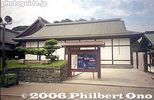
Tokushima Castle museum 徳島城博物館徳島城博物館Jul 17, 2006
|
|

View of Tokushima city from Bizan眉山Jul 17, 2006
|
|

Bizan Ropeway 眉山ロープウェイJul 17, 2006
|
|

Bizan Ropeway眉山ロープウェイJul 17, 2006
|
|
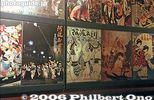
Awa Odori Kaikan museumAwa Odori publicity posters.Jul 17, 2006
|
|
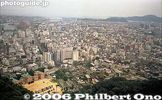
View of Tokushima city from Bizan眉山Jul 17, 2006
|
|

Sculpture of Awa Odori dancerJul 17, 2006
|
|

Sculpture of Awa Odori dancerJul 17, 2006
|
|

Condensed mirror of Awa Odori dancerAibahama Park in the distance.Jul 17, 2006
|
|
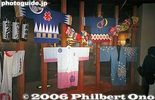
Awa Odori Kaikan museumHappi coats worn by Awa Odori dance troupes.Jul 17, 2006
|
|

Sculpture of Awa Odori dancers on mailboxJul 17, 2006
|
|

Shinmachi-bashi road in front of Tokushima Station 新町橋通りIt was Awa Odori time.Jul 17, 2006
|
|

In front of Tokushima StationJul 17, 2006
|
|

Sculpture of Awa Odori dancersJul 17, 2006
|
|
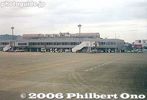
Tokushima AirportJul 17, 2006
|
|

Hi Philbert! Welcome aboard!Jul 17, 2006
|
|

Haneda to TokushimaJul 17, 2006
|
|

Tokushima StationJul 17, 2006
|
|

End of the courseJul 17, 2006
|
|
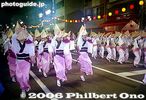
Jul 17, 2006
|
|

Tokushima Awa Odori dancerJul 17, 2006
|
|
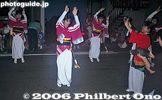
In front of my hotel after the festival ended.This group continued dancing late into the night.Jul 17, 2006
|
|

Jul 17, 2006
|
|

Jul 17, 2006
|
|

Jul 17, 2006
|
|
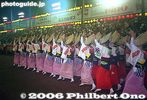
Tokushima Awa OdoriJul 17, 2006
|
|

Jul 17, 2006
|
|

Tokushima Awa Odori is also called the "Fool's Dance"Jul 17, 2006
|
|

Jul 17, 2006
|
|

Jul 17, 2006
|
|

Flute playerJul 17, 2006
|
|
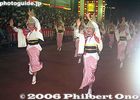
Really hard taking pictures with a small compact camera with no telephoto zoom.Jul 17, 2006
|
|

Jul 17, 2006
|
|
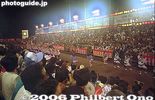
My compact camera lens had a flare/halation problem.Jul 17, 2006
|
|

Tokushima Awa Odori dancerJul 17, 2006
|
|

Jul 17, 2006
|
|
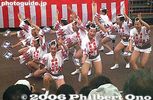
Jul 17, 2006
|
|
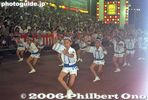
Finally found a seat closer to the road.Jul 17, 2006
|
|
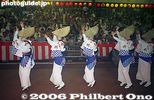
Jul 17, 2006
|
|
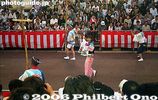
Actress Fujita Tomoko heads one dance troupe.Jul 17, 2006
|
|
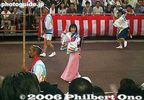
The festival usually features a celebrity or two. This is actress Fujita Tomoko at the Tokushima Awa Odori.Jul 17, 2006
|
|
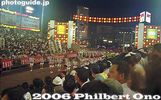
Jul 17, 2006
|
|

The Awa Odori begins before dark.Jul 17, 2006
|
|

Lining up for the non-reserved spectator seats.Jul 17, 2006
|
|
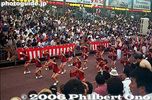
Jul 17, 2006
|
|
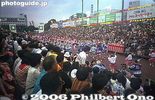
All spectator seats were taken.Jul 17, 2006
|
|

Free Awa odori lessons.Jul 17, 2006
|
|

Rear view of a dancerJul 17, 2006
|
|

Jul 17, 2006
|
|

Tokushima Awa Odori dancerJul 17, 2006
|
|
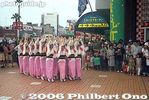
Pre-festival warm-up performance.Jul 17, 2006
|
|
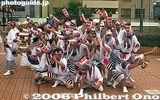
They performed in the afternoon.Jul 17, 2006
|
|

Tokushima's Awa Odori originated in 1587 to mark the completion of Izan Castle in Tokushima (formerly called Awa Province). The castle lord allowed the people to celebrate and they danced the night away.Jul 17, 2006
|
|
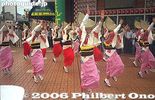
This was in front of a dept. store near Tokushima Station.Jul 17, 2006
|
|
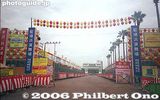
One of Japan's grandest festivals, the Tokushima Awa Odori is a summer dance performed in central Tokushima city. Numerous dance troupes called "ren" appear in a long parade along the city's main streets for four evenings in mid-Aug. About 2 million people see it during the four days it is held. It is like a bon dance to greet the souls of the deceased returning to visit. There are other Awa Odori festivals in Japan, but the one in Tokushima is the original and largest one. "Awa" is the former feudal name of Tokushima. Photo: Entrance to one of the spectator areas called "embujo" (admission charged). 藍場浜演舞場Jul 17, 2006
|
|

These photos were taken in Aug. 1999.Jul 17, 2006
|
|
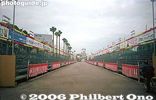
Spectator seats. Admission is 1,000 to 2,000 yen.Jul 17, 2006
|
|

Crowds already line Tokushima's main street soon to be closed to traffic.Jul 17, 2006
|
|

Akita bijin (beauties) promoting Akita riceJul 17, 2006
|
|

JR Akita StationJul 17, 2006
|
|

A broken paper lantern is disposed of.At 8:40 p.m., the main performance stopped and the spectators were invited to try their hand at the kanto for 10 minutes. At 8:50 p.m., all the kanto were withdrawn from the site.Jul 16, 2006
|
|

Notice the kanto in the background caught in the power lines.The kanto performance has also been introduced overseas. The first overseas performance was held in San Diego, California in 1976 as part of America's bicentennial celebration. Since then, kanto performances have been well-received in Australia, Hawaii, China, Italy, Germany, France, Brazil, and England.Jul 16, 2006
|
|

Jul 16, 2006
|
|

CrashJul 16, 2006
|
|

The tallest kanto is 8 meters high. It is made higher by connecting bamboo pole extensions at the bottom. The more skillful men added more pole extensions than usual or fanned themselves with a fan while balancing the kanto. At halftime, everyone took down the kanto and they moved out. Another group of kanto masters came in and the spectacle restarted. Jul 16, 2006
|
|

Taking it to the limits.This guy is balancing a super-high kanto while the pole arches to an extreme degree. During the final moments, he ran across the road to maintain the balance long enough for the pole to snap under the weight of the lanterns. That was really neat. In the right photo, a crashed kanto is readied for another balancing attempt.Jul 16, 2006
|
|

The kanto's paper lanterns and the performers' happi coats are emblazoned with the crest of the respective city block.Thirty-seven city blocks were represented. There were also corporate logos on some lanterns.Jul 16, 2006
|
|

Notice the little pad on his forehead where he will balance the pole next.It takes years to master kanto stunts. The best performers started training during childhood. From the beginning of July, you can see people practicing on Akita's uncrowded streets. Fathers teach their children as the rest of the family watch. Although today's kanto masters hail from various occupations, in the past, the kanto performers were mostly perfectionist artisans. The kanto is based on this artisan spirit. A kanto has to be constructed perfectly. Otherwise, it is remade all over again.Jul 16, 2006
|
|

The largest kanto is 12 meters high, weighs 50 kilograms, and has 46 paper lanterns. The smaller kanto are 5 and 7 meters high. The kanto symbolizes a ripe rice plant with unhusked golden grains (the paper lanterns). The festival is therefore a prayer for a good harvest.Jul 16, 2006
|
|

The objective is to balance the kanto steady enough so that the candles in the paper lanterns don't go out. The performer has to move about deftly whenever there is a gust of wind or when the pole starts to bend over. After attaining a steady balance, the skillful technician shifts the pole to other parts of his body while his surrounding colleagues clap and shout "Dokkoisho! Dokkoisho!"
Occasionally, someone loses his balance and the pole and lanterns come crashing down on the power lines, safety ropes, or right on the crowd. When I was there, one came crashing down on the crowd I was in. We all screamed. But it was surprisingly harmless. All the lanterns flamed out and some lanterns had holes. The lanterns were just relit and raised again. Falling kanto added real drama.Jul 16, 2006
|
|

Balancing act. The kanto symbolize rice plants ready to be harvested.This is perhaps the most anxiety-provoking festival. Men in happi coats balance these tall paper lantern-bedecked bamboo poles, called kanto, on their foreheads, shoulders, hand palms, or hips. While watching, you can't help thinking, "Will it fall?" or worse, "Will it fall on me?" The candle-lit paper lanterns contrasted nicely against the dark sky.Jul 16, 2006
|
|
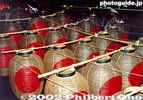
During the festival period, several events are held in the daytime. One is the "Kanto Challenge Corner" where the first 100 applicants on each day can try balancing the smaller kanto. Each participant receives a "Kanto Master" certificate. There is also the Kanto Myogi (Stunt) Contest where group and individual participants compete to be the year's best kanto technician.Jul 16, 2006
|
|

The festival is held along a straight, 800-meter section of San'o Odori Road, a 20-min. walk from Akita Station.In the evening, the main event starts at 6:38 p.m. with a taiko drum-beating performance or minyo dancers on San'o Odori Road. At 7:17 p.m., some 200 kanto are carried into the street to the sound of flutes and taiko drums. At 7:40 p.m. following a brief address by the city's mayor, the performance begins as the kanto are raised all at once.Jul 16, 2006
|
|
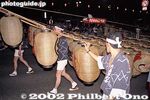
A kanto is carried into the street to the sound of flutes and taiko drums.Jul 16, 2006
|
|

One of the Big Three Festivals in Tohoku, the Kanto Matsuri has men in happi coats balancing tall paper lantern-bedecked bamboo poles, called kanto, on their foreheads, shoulders, hand palms, or hips. Held on Aug. 3 to 6 near JR Akita Station.A kanto is carried to the festival site before nightfall.Jul 16, 2006
|
|

Jul 16, 2006
|
|

Taiko drummerJul 16, 2006
|
|

Nice during the day, but more dramatic at night.Jul 16, 2006
|
|

Jul 16, 2006
|
|
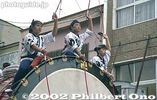
Jul 16, 2006
|
|

The long, slender drum sticks make a very penetrating, slapping sound.The drum sticks are long, slender, and slightly elastic. They make a very penetrating, slapping sound. It's a real treat to watch these vivacious women beating these huge drums in unison.Jul 16, 2006
|
|

Festival during the day.Jul 16, 2006
|
|
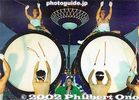
The beat was the same as at the Nebuta Festival.There were also many giant taiko drums with female taiko drummers. Jul 16, 2006
|
|

Jul 16, 2006
|
|
| 71466 files on 284 page(s) |
 |
 |
260 |  |
 |
|